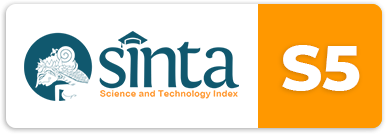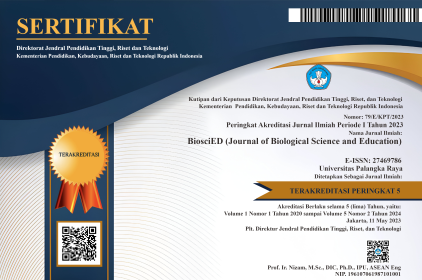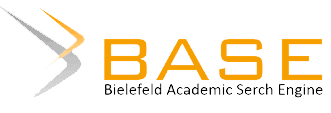The Diversity of Echinoderms in Intertidal Zone of Sundak Beach, Gunung Kidul, Yogyakarta, Indonesia
DOI:
https://doi.org/10.37304/bed.v2i1.2626Abstract
Indonesia is a maritime country with high diversity of marine biota, which one is from Phylum Echinoderms. Echinoderms are known as biota of marine which is are living on corals, sandy, and on the intertidal zone and deep ocean. The intertidal characteristics of Sundak Beach has a suitable structure to echinodems life because there are many corals, but there is many species has not been identified before. The purpose of this research is to know the diversity of echinoderms phylum on the intertidal zone. Sampling was carried out on August, 24th 2019 with purposive random sampling method along the coastal-line in intertidal zone. The result of this research are identified and classified on the each class. Based on the results, the are found species from Echinodea, Holothuroidea, and Ophiuroidea. Species from Echinoidea are Tripneustes gratilla, Echinometra mathaei, Heterocentrotus trigonarius, Diadema antillarum., and Echinothrix calamaris. Holothuroidea namely Holothuria atra. Ophiuroidea namely Ophiotrix fragilis, Ophiocoma scolopendrina, and Ophiocoma erinaceus. The conclusion from this study is the discovery of five species from class Echinoidea, one species from class Holothuroidea and three species from class Ophiuroidea.
Downloads
References
Aziz, A. 1995. Beberapa Catatan tentang Teripang Bangsa Aspidochirotida. Oseana. 20(4):11-23
Badger, J. H. 2012. Global diversity and Phylogeny of the Asteroidea (Echinodermata). PLoS ONE. 7(4): 1- 22.
Bakus, G.J. 1973. The biology and ecology of tropical holothurians. In: Jones, O.A. and R. Endean (eds.). Biology and Geology of coral reefs. Academic Press. New York. pp.325-367.
Burton, M. and Burton, R. 2002. International Wildlife Encyclopedia. Tarrytown: Marchall Cavendish Corporation. p 2276.
Byrne, M and O’Hara, T.D. 2017. Australian
Echinoderms: Biology, Ecology and Evolution. CSIRO Publishing. Clayton South, Australia. 38: 326-327.
Clark AM and Rowe FWE, 1971. Monograph of shallow-water Indo-West Pacific echinoderms. The British Museum Publication (Natural History), 690:1-238.
Clark, A. M., Rowe, .W. E. “Monograph of shallowwater Indo-West Pacific echinoderms”. The British Museum Publication (Natural History), 1971, pp : 1- 238.
Eleaume, M., Schories, D., Kohlberg, G. 2016. Feather Stars, Crinoidea. In: Schories and Kohlberg. Marine Wildlife King George Island Antartica. Dirk Schories Publication, Rostock, p. 212.
Gosper, L. 1971. Guide to identification of marine and estuarine invertebrate. John Wiley and Sons Inc., Canada. Jones and Endean (ed.). 1976. Biology and Geology of Coral Reefs Vol.III Biology 2. Academic Press New York. Pp. 107-108.
Kerr, A.M. and Kim, J. 2001. Phylogeny of
Holothuroidea (Echinodermata) inffered from morphology. Zoological Journal of the Linnean Society. 133: 63-81.
Lawrence, J. M. & Agatsuma, Y. 2007. Ecology of Tripneustes. In: Lawrence, J. M. Edible Sea Urchins: Biology and Ecology. 2nd Edition. Elsevier, USA, pp. 297 – 305, 499 – 500.
Magnus, D.B.E. 1967. Ecological and ethological studies and experiments on the echinoderms of the Red Sea.II.Heterometra savignyi, Stud. trop. Oceanogr. 5:644-650.
Massin, C. 1996. Result of the Rhumpius
Biohistoritical Expedition to Ambon (1990). Part.4. The Holothurioidea (Echinodermata) Collected at Ambon during the Rumphius Biohistorical Expedition. Zoologische Verhandelingen. 307:18- 19.
Reich, A., Dunn, C., Akasaka, K., and Wessel, G. 2015. Phylogenomic Analyses of Echinodermata Support the Sister Groups of Asterozoa and Echinozoa. PLoS ONE. 10(3): 1-11.
Rowe, F.W.E. and J.E. Doty. 1977. The
shallowwWater Holothurians of Guam. Micronesica. 13(2):217-250.
Santhanam, R., Ramesh S. and David, S.R.N. Biology and Ecology of Pharmaceutical Marine Life: Echinoderms. Florida: CRC Press. pp. 176.
Saravanan, R., Johnson, B & Edward, L. L. 2017. Echinometra mathaei (Blainville, 1825). In: Ranjan, R., Mutkha, M., Ghosh, S., Gopalakrishnan, A., Gopakumar, G. and Joseph, I. Prioritized Species for Mariculture in India. ICAR-CMFRI, Kochi, p. 440.
Schultz, H. A. G. 2015. Handbook of Zoology: Echinoidea. Hemdingen: Walter de Guyter.
Setyastuti, A. 2014. Echinodermata, Holothuria atra, in Intertidal Seagrass Bed Off The Bama Beach, Baluran National Park, East Java, Indonesia. Jurnal Ilmu dan Teknologi Kelautan Tropis. 6: 31-39.
Sloan, N.A., Clark, A.M. & Taylor, J.D. 1979.The echinoderms of Aldabra and their habitats. Bull. Br. Mus. Nat. Hist. (Zool) 37: 81-128.
Stohr, S., O’Hara, T. D., and Thuy, B. 2012. Global diversity of Brittle Stars (Echinodermata: Ophiuroidea). PLoS ONE 7(3): 31940.
Tomascik, T. 1997. The ecology of the Indonesian seas (Part 2). Tuttle Publishing, pp. 878–879
Wessel, G. M. 2016. 6 Diversity in Mechanisms of Germ Line Formation. In P. M. Wassarman [ed]. Essays on Developmental Biology Part 2. London: Elsevier. p 563.
Downloads
Published
How to Cite
Issue
Section
License
Copyright (c) 2021 Herin Yoga Lesti, Syifa Evilia Maharani, Naila Nabila Rahmani, Fania Baeta Roska Khalallia, Ni Made Sri Winasti, Achmad Mustofa Huda, Septi Lutfiatun Nafiah, Rury Eprilurahman

This work is licensed under a Creative Commons Attribution 4.0 International License.















